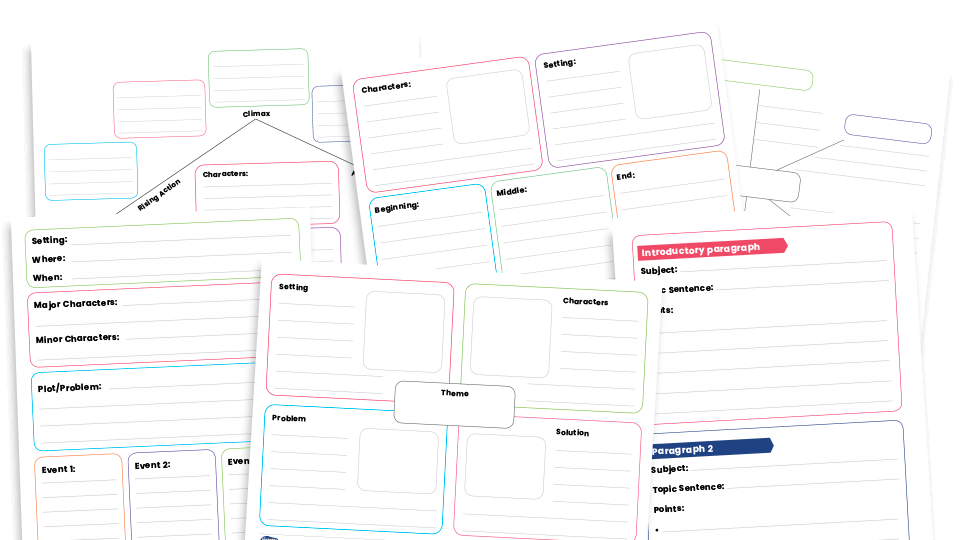Story writing – Best storyboard templates & creative writing ideas
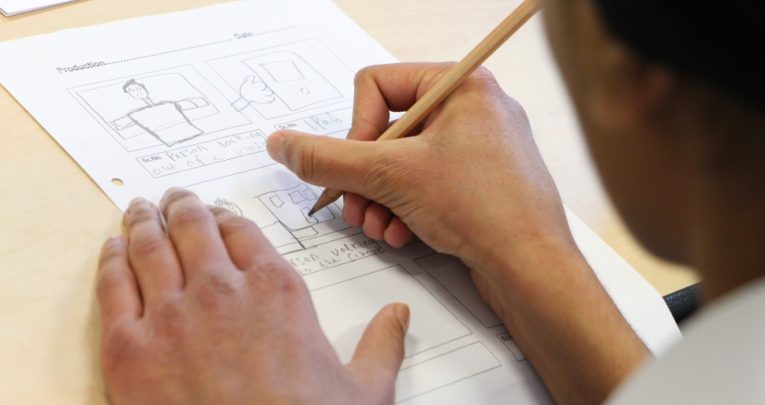
Whether it’s writing short stories, creating comic strips or filmmaking, every tale needs the right structure to be told well…

- by Teachwire
- Classroom expertise and free resources for teachers
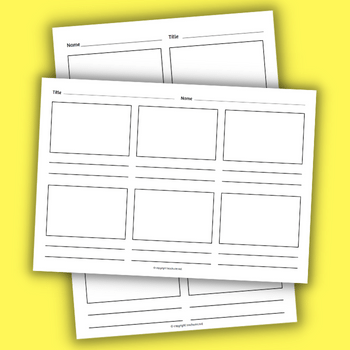
Having a beginning, middle and end may be a staple of story writing, but alone it’s not enough.
There are many ways to tell a story and write great fiction. One thing is constant though, a good story needs good structure. These resources and activities will help your pupils develop the skills required to add that foundation to their creative writing.
We also have lots of advice and resources for:
- The story mountain technique
- Building suspense in writing
Blank storyboard templates
Basic storyboard templates
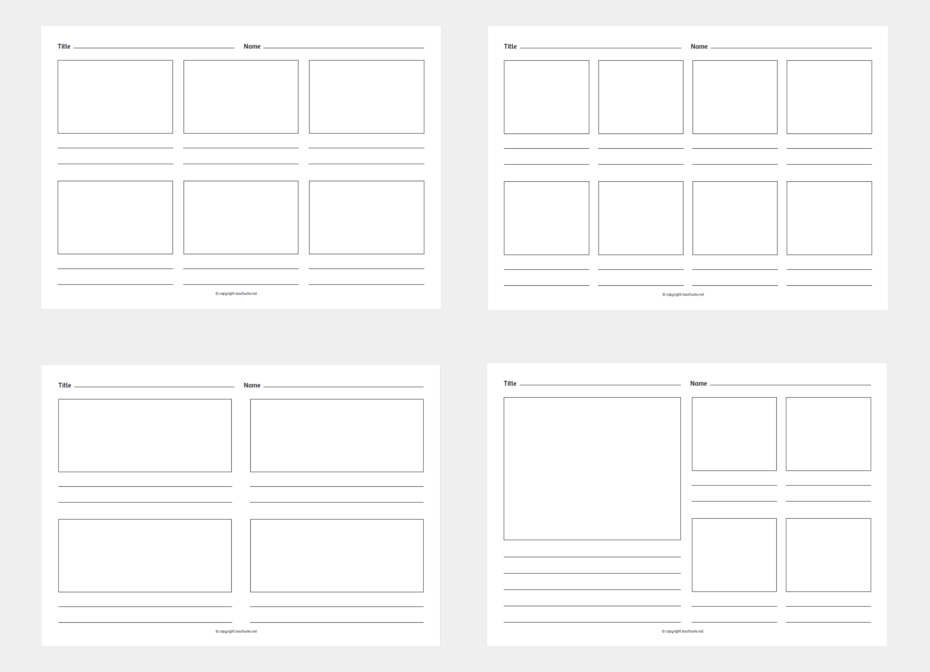
Here’s a simple, straightforward, printable storyboard template. It doesn’t matter how extravagant a creative writing lesson you have planned, at some point you’re going to need these.
There are seven layouts in total here, three portrait and four landscape, with differing numbers of panels and space for students to write.
Writing templates pack
This KS1 and KS2 writing template pack from literacy resources website Plazoom contains a range of templates to support children with their story idea. It’s ideal for helping pupils to organise their thoughts.
The templates included are:
- Mind map
- Story map
- Storyboard
- Comic strip pages
- Report research
- Report plan
Story mountain template
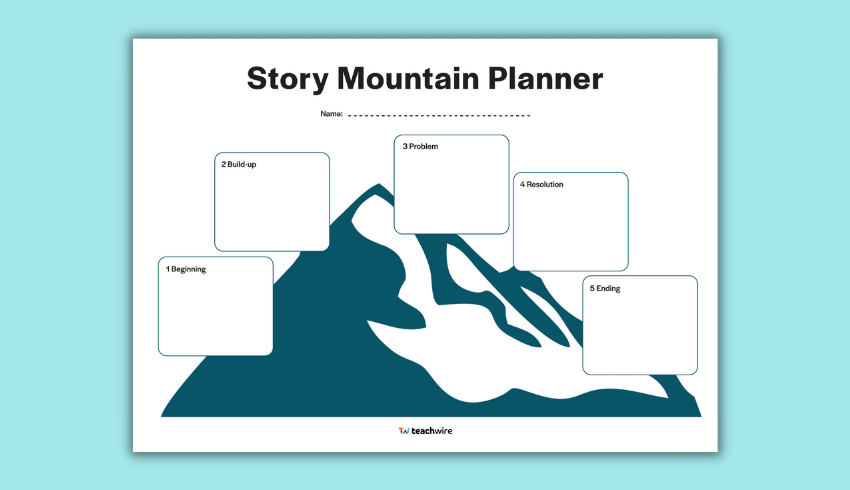
If you’re looking for teaching resources that will help children with their story planning, this handy story mountain template is just the ticket.
Story writing resources
WAGOLL packs from real authors

Peer inside the mind of award-winning children’s authors and help pupils understand how to create engaging characters, captivating atmospheres and suspenseful situations. Our free WAGOLL resource packs contain an exclusive extract, working wall template, teaching notes, and worksheets. Authors include:
- Cressida Cowell
- Liz Flanagan
- Hannah Gold
- & lots more
Author in your Classroom
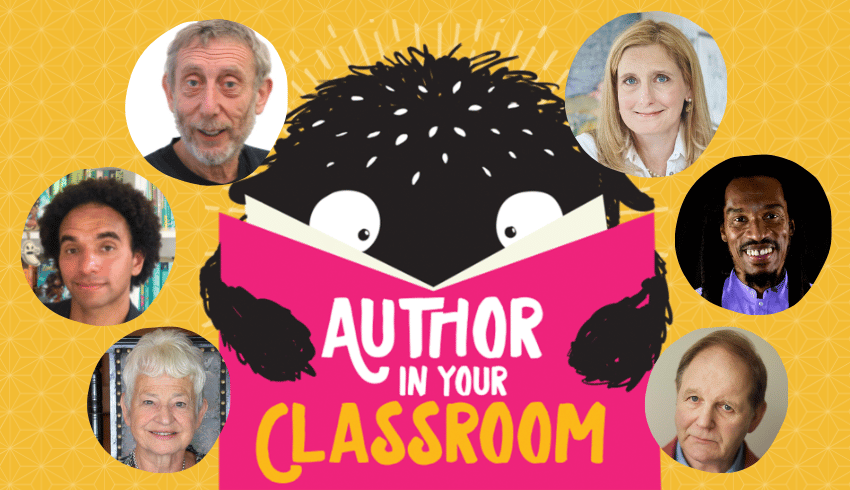
Do you ever wish that you could just hand over your English lesson to one of the UK’s most successful children’s authors and let them take the reins?
You’re in luck! Author In Your Classroom is a brilliant free podcast series recorded especially for schools. Every episode comes with free teacher notes, PowerPoints, display materials and more.
- Write a new take on a classic with Sir Michael Morpurgo
- Place familiar characters in new settings with Dame Jacqueline Wilson
- Imagine a cast of characters with Lauren Child
- Create magical creatures with Cressida Cowell
- Plan a plot with Robin Stevens
- Create a supervillain with Liz Pichon
Creative writing worksheets
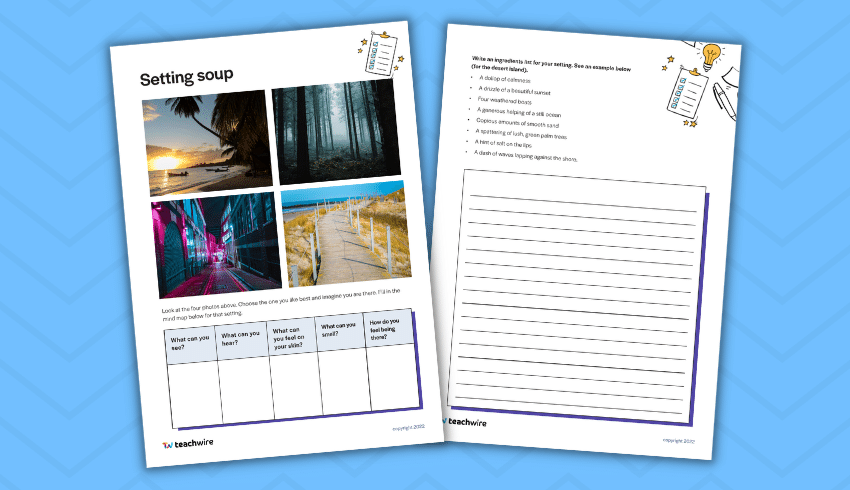
Want to fit more creative writing into your school timetable but not sure where to start? These free fun writing prompts take just ten minutes and are perfect for slotting into small gaps in your day.
They’ll get children’s creative juices flowing and hopefully improve their writing skills too.
200 inspiring writing prompts
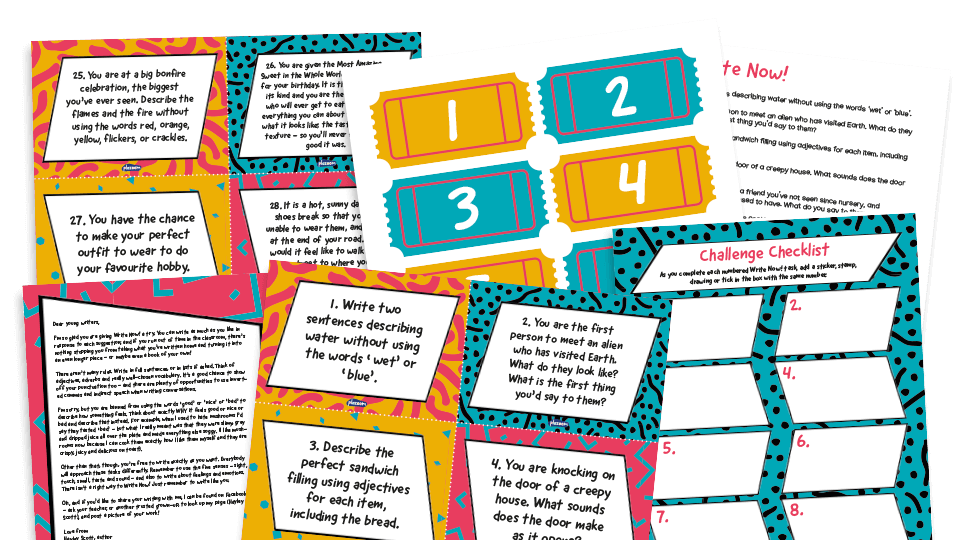
Inspire short bursts of creativity with 200 original and inspiring writing prompts from teacher and published author Hayley Scott. They’re perfect for daily ten- or twenty-minute writing sessions or home learning.
Story writing lesson plan
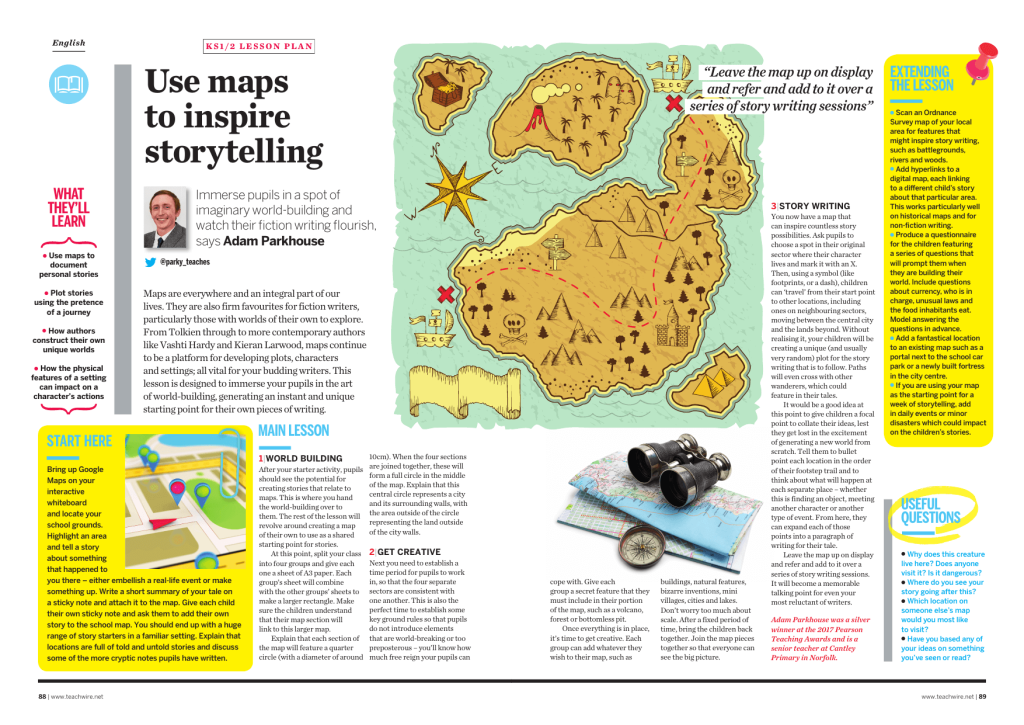
Immerse pupils in a spot of imaginary world-building and watch their fiction writing flourish with this free KS2 lesson plan.
It’s designed to immerse your pupils in the art of world-building, generating an instant and unique starting point for their own pieces of writing.
Daily story starters
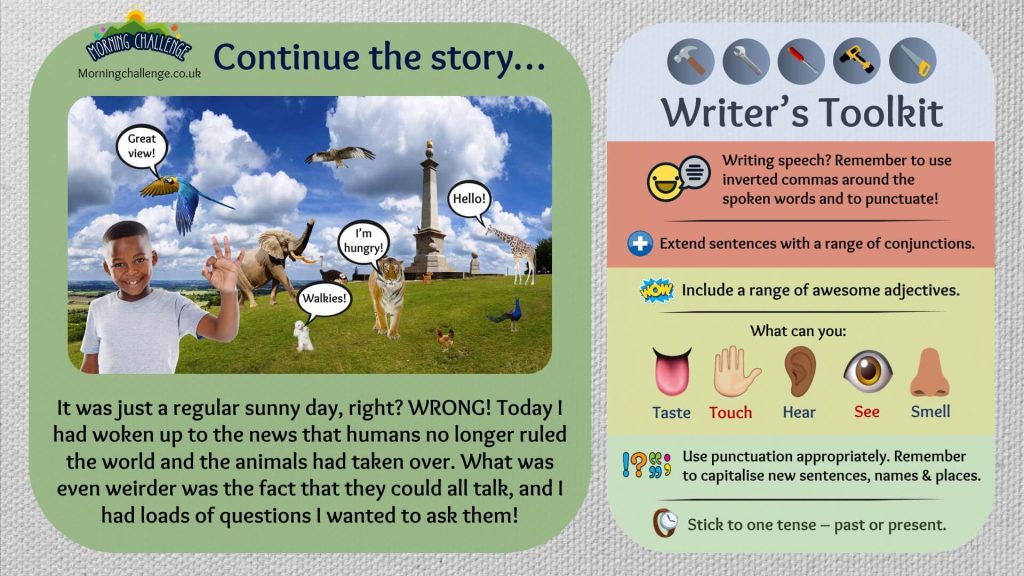
Spark creativity and boost literacy skills with these five free Story Starters slides from Morning Challenge. Each one contains a ‘writer’s toolkit’ section and a mix of comprehension and word tasks.
Writing posters set
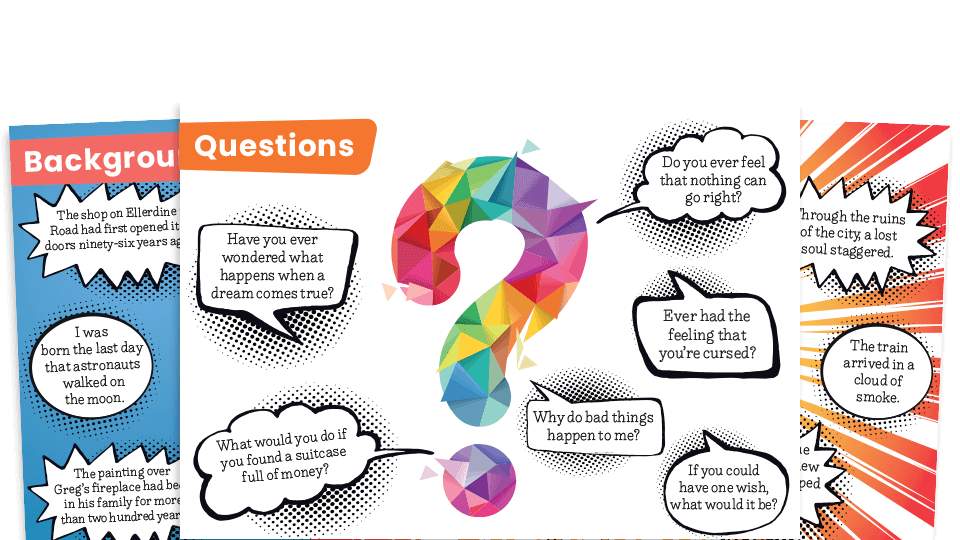
Decorate your classroom with good story starters and ideas for getting going with creative writing with this interactive poster set from literacy resources website Plazoom.
There are seven posters in total, each showcasing different creative writing starters you can use to begin a story: Questions, action, dialogue, background information, introducing a character, describing the setting.
Tried and tested story writing prompts and starters
Write mini sagas
Show children short stories consisting of exactly 50 words. Find these online (fiftywordstories.com) or write your own.
Ask pupils to help you write a 50-word version of Goldilocks and the Three Bears. To begin with, don’t count the words but display the story on the board, before asking children to help you reduce the word count by taking out unnecessary details.
Read and reread the story and ask if anything significant is missing. Encourage children to plan their own mini sagas by making notes of key events, and then ask them to draft, edit and revise until they are happy they have produced a good 50-word version.
Oral storytelling prompts
Choose a story which you can tell confidently without reading, such as The Three Little Pigs. Display some brief notes so the children can see how you use these to guide your storytelling.
Afterwards, ask pupils to use the notes to tell each other the story. Encourage them to discuss each other’s versions and suggest what might be changed. Next, work in pairs to make brief notes about another well-known story. Then practise telling it, first to each other and then to other pairs.
Wish come true
Ask children to consider what they would wish for if they were presented with the opportunity. Focus on wishes for experiences that don’t involve a permanent change, such as meeting a famous person or playing in an important match.
Ask the children to research some of the people and things that will appear in their wishes.
For example, if they wished to meet a celebrity, they could find out about the person so they could describe the experience in detail. Pupils can now write a complete narrative which describes their initial response, the actual experience and how it made them feel.
Short sentences
Read this section of Little Red Riding Hood: ‘She heard the noise again; footsteps behind her in the darkness of the forest. She hurried and her feet made little impression on the soft, leaf-littered ground. There was rustling to her left so she ran as fast as her little legs would carry her.’
Contrast it with this version: ‘There it was again… footsteps. She hurried. Her feet made little impression on the soft, leaf-littered ground. There was rustling to her left. She ran.’
The short sentences force the reader to read at pace and feel the character’s panic. Take a scene from a book that is written in long, descriptive sentences and rewrite it with shorter ones. Compare.
“The short sentences force the reader to read at pace and feel the character’s panic”
Fan fiction
Fan fiction is a great opportunity for novice writers because it arms them with fully formed characters and worlds. Read a novel or watch a film then ask pupils to discuss the characters’ traits.
How would these characters act if they were introduced to a new person? There are a number of writing outcomes that can be achieved: a new character intervening in an existing episode; dialogue between the new character and an existing one; retelling a scene through the eyes of a new character.
Story endings
Look at this story ending from Jessica’s Other World by David Waugh: ‘“What is it Mr Addison used to say all the time?” asked Jessica, but she answered her own question: “It’s make your mind up time!”’
Questions immediately arise. Who is Mr Addison? Who is Jessica? What does she have to make up her mind about? What kind of endings do pupils prefer? Do they like everything to be rounded off neatly or do they prefer to be left wondering?
Ask pupils to find story ending examples. Make notes on what might have happened in the story to lead up to the final line. Compare these notes with the real stories.
These ideas have been adapted from 100 Ideas for Primary Teachers: Writing by Adam Bushnell (@authoradam), Rob Smith (@redgierob) and David Waugh (£14.99, Bloomsbury).
What if…?
Lots of story ideas come from asking yourself the question, “What if?” Try one of these or come up with your own “What if?”:
- What if an alien took over the prime minister’s body?
- What if a girl found a dragon at the bottom of her garden?
- What if you could read minds?
- What if there were no such thing as death?
X meets Y
This is a really simple formula for creating a story. Just pick two pre-existing characters and imagine what would happen if they met. They could be real people, fictional characters or archetypes.
“Pick two pre-existing characters and imagine what would happen if they met”
Think about the contrasting personalities of the two characters. Would they clash? Get on like a house on fire? Go on adventures together? Become mortal enemies? What are the characters’ weaknesses? Strengths? And how would those weaknesses and strengths feed off one another?
Ruin their lives
As a class make up a main character together, and decide on that character’s goal in life (and in the story that you’re going to write together). Then form teams.
Flipping a coin to decide who goes first, the first team says what the character is going to do first to set about achieving their goal in life. Then it’s the next team’s turn. They invent a problem or obstacle to put in the character’s way – this could be a hostile character, or an event.
Now the first team has to decide how to solve that problem. Then the second team tries once more to scupper the character’s plans… and so on.
“The second team tries once more to scupper the character’s plans”
It’s a great way to think about problems and solutions in stories, and can generate quite a lot of enjoyable rivalry.
True story
Take a story from the news – whether it’s a local news story about something apparently petty and small, or a really big event that’s splashed across the media all over the world.
Then pick one person from that story and write about them. It doesn’t have to be the main figure in the real-life drama – it could just be a witness. It could even be the journalist who is reporting the story.
Think about how the events make them feel. What might they do next? Think about what’s not reported – are there any secrets hidden behind the story?
By using a real event, you have the beginnings of a plot already, but feel free to deviate from real events as wildly as you want. There’s a real comfort from having something solid to work with.
Pick a genre
As with a real-life event, having genre conventions to work with means you’re not starting from a completely blank slate. Here are a few genres you could try:
- Space opera – like a soap opera, but in space; characters leading dramatic personal lives with lots of conflict and emotion, against a backdrop of interstellar travel and/or war.
- Horror – lock a bunch of characters in a haunted house or other scary place and create increasingly dangerous situations for them. Kill a few off, focusing on the ones who do silly things like go alone to check out the mysterious noise. Add monsters/ghosts/vampires and any other favourite things that go bump in the night.
- Fantasy – mix elves and wizards with beautiful landscapes, magical objects and some kind of quest, plus a few mysterious helpers along the way and an even more shadowy villain who’s trying to thwart the heroes at every turn.
- Detective – start with a crime. Bring in a detective character (not forgetting to give them various personality flaws and other eccentricities) and take them through the process of solving the crime, with various red herrings and confusing clues along the way.
- Fairytale – princes, castles, spells, wishes, evil fairies and happy-ever-afters.
These ideas are from Louie Stowell, an author for e-book publisher Fiction Express.
Cut to the chase
All the greatest children’s books start with a brilliant first sentence to hook the reader in. Show children some of the best opening lines and discuss what makes them intriguing, then ask the class to write one sentence to grab a reader’s attention. It’s a simple exercise that can get every story off to a great start.
“All the greatest children’s books start with a brilliant first sentence to hook the reader in”
Make a map
Drawing a map is fantastic for those who find working out plots challenging. First, brainstorm a list of features that could go on a map and make a hero’s journey difficult.
Next, give them a twist, like a tornado that can shrink you to the size of a pea or a swamp that curses you if your foot touches water.
Now ask everyone to think of a quest. It could be saving a magical creature or finding the antidote to a poisonous potion.
Finally, ask the class to draw their maps, working out the route their character will take, the three difficulties they’ll face and how they’ll overcome them to succeed in their quest.
Name generator
Make a character name generator by cutting up lots of different words and putting them in a bag. Ask pupils to pick out two words each and use them to come up with a name.
Next, pose a few questions to children, designed to help them make their characters less wooden, such as ‘What are they good and bad at?’ and ‘What are they scared of?’
“Make a character name generator by cutting up lots of different words and putting them in a bag”
A character facing their fears in a story creates brilliant drama. Ask children to hot seat their character. This is a technique used by some writers so they can get to know their characters better.
Ask one pupil to sit up front with their character in mind while the rest of the class asks questions about them. Memorable characters often emerge from this exercise.
Worst case scenario
It’s our job as authors to make life difficult for our characters. The more we can throw at them, the more readers will root for them. A trick used by writers to keep a story gripping is to ask these two questions:
- What is the very worst that could happen to my character in this situation?
- How do I get them out of it?
It’s a simple way to keep readers on the edge of their seats. Choose a scenario with your class, such as a boy being locked out of his house.
Together, brainstorm what the worst case scenario for him would be as he attempts to get inside his home, then resolve it for the character. For example:
- He gets stuck trying to climb the fence into his back garden
- He manages to free himself but is chased by the neighbour’s dog
- He escapes by climbing a tree, except the branch snaps
Keep on asking the two questions until there are enough ideas for a complete story, then work together to figure out the perfect ending.
These ideas are from Juliette Forrest, author of The Night My Dream Came Alive. Follow her on Twitter at @jools_forrest.
Adventures of a seafaring iguana
This video introduces us to a man on a boat who crosses paths with an unlikely friend – an iguana treading water, four miles out from shore.
This touching video provides a great prompt for a creative writing exercise. Task students with writing a short story on how the iguana found his way out to sea. Share all the different versions afterwards.
- Perhaps the iguana stowed away with some pirates?
- Maybe he was washed away in a flood?
- He might even have just fancied a swim. Who knows?
Step aside, Bond…
This clip is an excellent way to spark your students’ imagination. A short animation and voiceover tells pupils they have been accepted into a super secret spy agency operating under the cover of birdwatchers. The writing challenge stems from thinking up details of how this spy organisation operates.
There are plenty of suggestions to help your students get started too, such as:
- What kind of gadgets do they use?
- Do they have a secret base? If so, what does it look like?
- Any evil villains? What’s their master plan?
The oldest message in a bottle
This intriguing video documents the discovery of the world’s oldest message in a bottle by Perth resident Tonya Illman, who stumbled across the missive whilst litter picking in 2018.
The 131-year-old note was written by a captain of a German sailing ship, and was thrown from the vessel whilst on a voyage from Cardiff to Indonesia.
After watching the video, it’s likely your students will be curious about what happened to the ship and crew – a thought that would make an exciting writing activity.
What do you think happened to the Captain and his boat?
- Did they get to Indonesia safely?
- Or perhaps they were stranded on a desert island?
- Worse still, could they have been attacked by a giant octopus?!
Wonderful wingsuiting
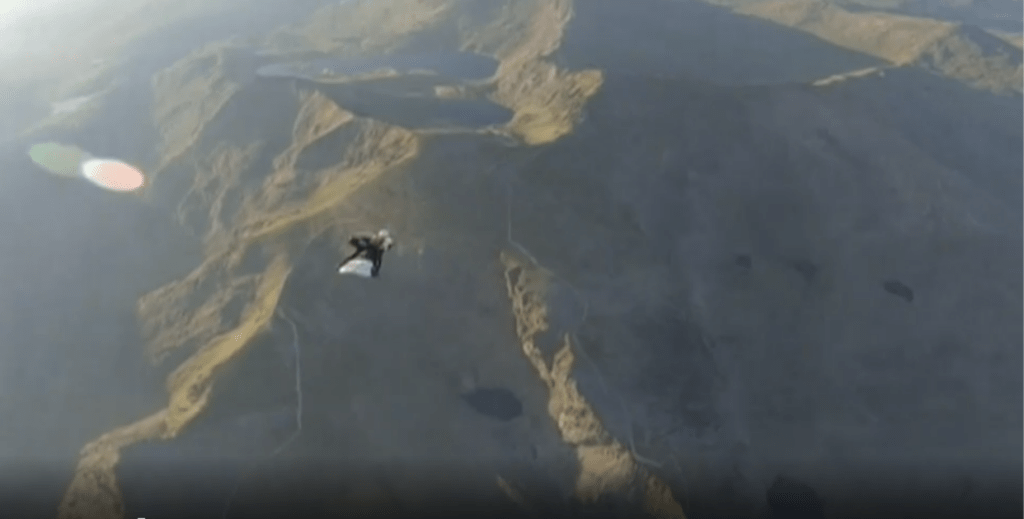
This pulse-pounding clip follows wingsuit pilot Sam Laming as he becomes the first person to perform a close proximity wingsuit flight down Mount Snowdon in Wales.
Sam spent five years training for this extreme stunt, which should open up plenty of creative writing opportunities for your class, the task being to place themselves in Sam’s position and describe how they would fare with the momentous endeavour. Below are some ideas to help get them started:
- What’s the weather like? Though it might start off safe and sunny, what would happen if a storm approached?
- How far can you see? Can you spot towns or villages or are you surrounded by hills and fields?
- Is there any wildlife – rabbits hopping below you, or birds flying in formation?
An island story
In this video, join Mr T on a boat on the ocean. As you look across, you see a mysterious island – and perhaps even treasure. It’s now your pupils’ job to answer one simple question: what happens next?
- Are you going to land on the island and steal the treasure?
- Is there something on the island, keeping the treasure protected?
- Is there someone on the island who needs rescuing?
- Will there be a message in a bottle on the sand?
Browse lots more creative writing prompts.
Even more story writing resources
Story beginnings
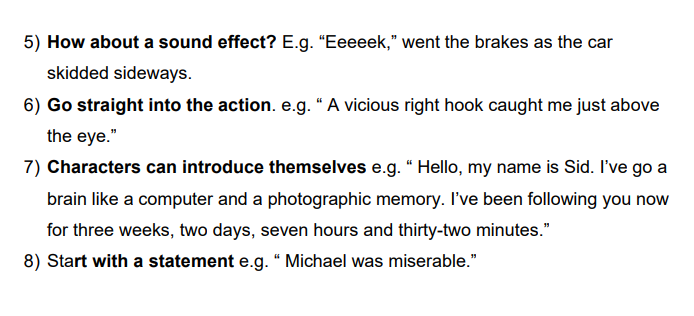
The opening of a story is hugely important. It has to engage the reader, of course, but also needs to establish tone, setting, character, plot or any combination of these and more. But it’s also where children stare at a blank page and get stuck.
This quick list of different types of opening includes ones to avoid that teachers see time and time again, and alternatives that children may not have considered. There’s also a sheet of story endings.
Shaun the Sheep – Starting your story
This resource explore the work that goes into making a film (including interviews with the film’s story-boarders), and invites primary students to consider what goes into creating a good, memorable story for the screen.
Success criteria for adventure stories

This success criteria menu supports children in writing an exciting climax to an adventure story (or short story).
It includes a sample story ending, based in the Stone Age, as an example for children, with a sentence type activity to help them write their own version.
Alex Rider – How to write a story
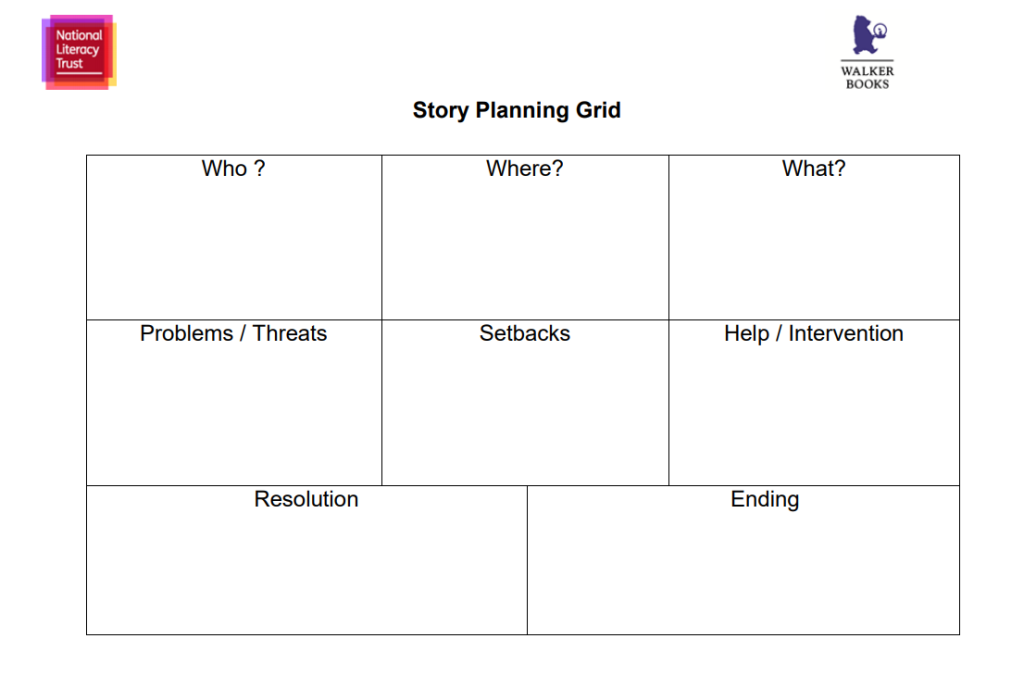
The National Literacy Trust created this resource to help develop writing for purpose, using a story starter from one of the world’s most famous authors, Anthony Horowitz.
This story writer resource kit has been designed to be as flexible as possible. So whether you are having a one day creative writing workshop to enable your pupils to enter the competition and produce their own winning story, or if you are looking to develop a whole unit of work around narrative with the competition as your final outcome, there is support and inspiration to help.
Story writing competitions
Story writing competitions encourage creativity and imagination. They provide an opportunity for students to refine their writing skills and sometimes come with a great prize! Check out current writing competitions that your pupils can enter.
Browse KS3 creative writing resources for teaching plot and setting.




